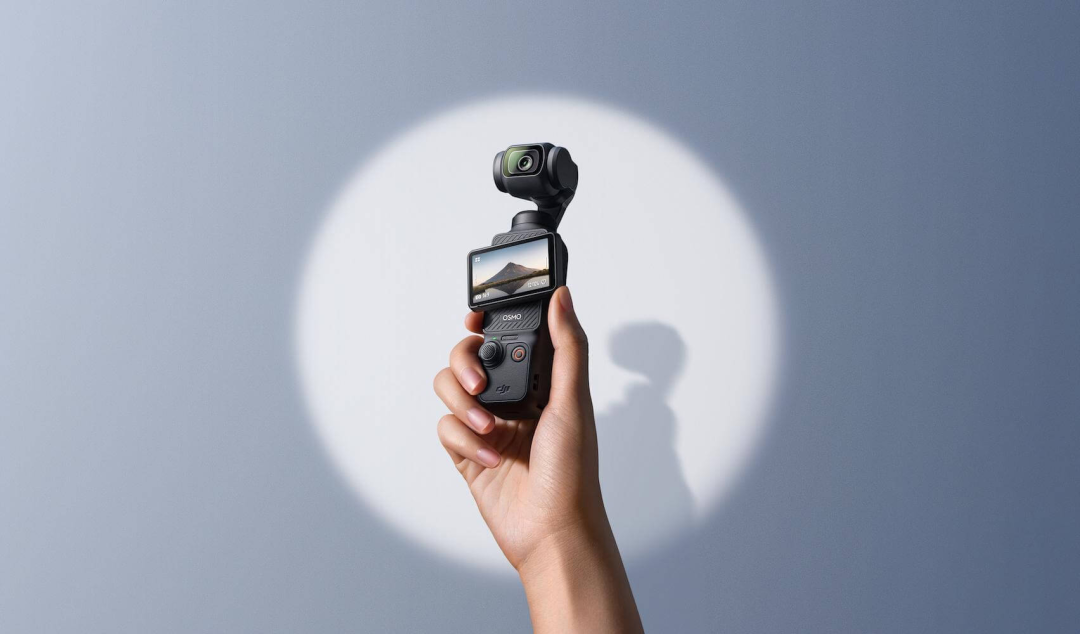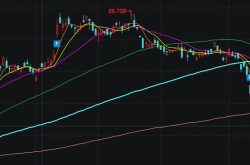Disruption in the Panoramic Camera Market: A Noisy Landscape Amid DJI's Silence
![]() 11/14 2025
11/14 2025
![]() 461
461

Author: Chang Yuan
Editor: Key Focus
In the autumn of 2025, the imaging sector experiences renewed turbulence. The panoramic camera market, once a niche segment with limited attention, has seen a surge in popularity, fueled by DJI's entry, frequent statements from Insta360, and the emergence of two reports with vastly differing data.
From DJI's standpoint, panoramic cameras seem to be a convenient addition to its product matrix. Conversely, Insta360 views them as its cornerstone, consistently defending its leading position.
DJI, traditionally focused on technology and maintaining a low profile, unexpectedly finds itself at the center of a public opinion storm.
The origin of this controversy can be traced back to June of this year. After Insta360's successful listing on the Science and Technology Innovation Board, its founder frequently mentioned DJI in interviews, initially as a gesture of 'respect.' However, within a few months, the tone shifted.
In July, DJI released its first panoramic camera, the Osmo 360, as planned. This routine product launch was misinterpreted as a 'passive response' to Insta360's perceived intrusion.
Over the following months, Insta360's founder engaged in high-profile interactions based on DJI's developments, continuously escalating this 'confrontation' through lottery activities and voucher subsidies. DJI remained silent until two industry reports with vastly different conclusions on the 'sports and panoramic camera market' emerged simultaneously, pushing the dispute to a climax.
Which report's data is problematic?
Thus unfolds the data 'Rashomon' regarding the panoramic camera market.
A report by the third-party consulting firm Jiuqian stated, 'DJI captured 43% of the global panoramic camera market share in Q3 2025 (less than three months after its launch). Its global revenue share in the sports camera sector also steadily climbed to 66%, ranking first globally in the industry.' However, a few days later, Frost & Sullivan's report presented a starkly different picture—Insta360's panoramic cameras accounted for 75% of the industry, while DJI only had 17.1%.
In the consulting industry, conflicting data is not uncommon, but such vastly different and nearly opposite conclusions are rare.

To see through this fog, we must return to the data itself. We need a reliable 'anchor.'
According to media reports, DJI-related sources have confirmed that its Q3 panoramic camera shipments reached 290,000 units, with sales of RMB 860 million. This officially acknowledged data becomes the key to solving the puzzle.
Let's first use this anchor to examine Frost & Sullivan's report: If DJI's sales of RMB 860 million only correspond to a 17.1% market share, the total global Q3 market size would reach a staggering RMB 5.03 billion. Further extrapolating based on Frost & Sullivan's ratio, Insta360's 75% share would correspond to sales of RMB 3.77 billion.
However, a dramatic contradiction arises. According to Insta360's publicly released Q3 financial report, the company's overall revenue for the quarter was RMB 2.94 billion. In other words, the revenue of Insta360's single panoramic camera business inferred from Frost & Sullivan's report is nearly 30% higher than the entire group's total revenue.
This is an obvious and self-contradictory paradox.
Adding to the suspicion, according to a report by 21st Century Business Herald, Frost & Sullivan's report underwent two takedowns due to 'internal data verification' reasons. After more than a week of data verification, no downloadable entry for the report, like other reports, can be found on its official website to this day.
Now, let's examine Jiuqian's data using the same anchor. Jiuqian claims its data comes from listed company financial reports, e-commerce backends, and social media listening.
Its report indicates that Insta360's panoramic camera revenue in the second half of 2024 was RMB 1.65 billion, with sales of 610,000 units. This almost perfectly matches the data in Insta360's prospectus (revenue of approximately RMB 1.65 billion and sales of 620,000 units in the second half of the year).
Furthermore, Jiuqian's inferred Q3 data of DJI's panoramic camera revenue at RMB 860 million and sales of 290,000 units has been confirmed again by DJI.
Which of the two reports is closer to the truth?
In fact, what concerns us more is the industry reality revealed behind the data: According to Jiuqian's data, DJI, as a latecomer to the panoramic camera field, has nearly captured half of the market share in just three months. This raises another question: Is the latecomer too strong, or was this industry originally a niche market with limited growth?
The latecomer's 'blitzkrieg'?
Outside observers often interpret DJI's release of its first panoramic camera, the Osmo 360, in July as a 'lightning-fast counterattack' against Insta360's foray into the drone market. However, according to our multiple sources, this seems not to be the case.
DJI's consumer imaging portfolio, represented by the Osmo series, has now established a product matrix ranging from sports cameras, pocket gimbals, phone gimbals, to wireless microphones. However, in the scenario of 'immersive recording,' a complete piece of the puzzle has been missing.
Although panoramic cameras have long been considered a niche category, limited by the triple bottlenecks of image quality, user experience, and ecosystem, their high overlap with sports camera users and DJI's massive user base accumulated through drones and the Osmo Action series have naturally created expectations for panoramic products. For them, completing the entire process from shooting to post-production within the same ecosystem is undoubtedly the optimal experience.
For DJI, venturing into panoramic cameras seems like a natural extension of its technological path. Image processing, stitching algorithms, fisheye lens design, and the stacking design capabilities for high-density, miniaturized product hardware accumulated in its drone and handheld imaging product lines can naturally be transferred to panoramic imaging product development. It can be said that the technological path was already mature, and project initiation was only a matter of time.
In 2021, after releasing its second-generation sports camera product, the Osmo 360 project quietly commenced in 2022. Unlike regular upgrades, DJI was determined to create a 'truly meaningful panoramic camera'—it had to break through the dual limitations of traditional solutions in image quality and structure. To achieve this, the team chose a more challenging path: customizing a brand-new sensor system from scratch.
From design to driving the supply chain to achieve mass production, the development of this core component took two years. It wasn't until July 2025 that the Osmo 360 was officially released. During this silent research and development period, DJI remained silent, focusing solely on one thing: making the product excellent.
Perhaps even DJI itself did not anticipate that this would be misinterpreted as 'anxiety.' We can easily see DJI's confidence from the data:
According to previous reports by multiple media outlets, DJI's overall revenue in 2024 was approximately RMB 80 billion. Based on this estimation, selling RMB 860 million worth of panoramic cameras in Q3 only accounts for 1.08% of DJI's total revenue.
The panoramic camera business currently accounts for a relatively small portion of DJI's overall revenue, appearing more as a new business growth point rather than a core pillar.
What is even more noteworthy is DJI's repeated success in new sectors. In the sports camera market: When DJI launched the Osmo Action in 2019, GoPro was still the industry leader; however, by Q3 2025, Jiuqian's data showed that DJI had captured 66% of the global sales share, while GoPro's share had dropped to 18%.
From Jiuqian's data, it is evident that DJI is now exhibiting a similar growth momentum in the panoramic camera market.
The Boundaries of Innovation
'The King of Drones' was once DJI's most prominent label, but now, its strategic depth extends far beyond a single product. From the Osmo 360 to the Pocket 3 and Action 5 Pro, its continued success is not due to occasional breakthroughs but rather a result of continuous self-improvement, forward-looking and bold industry judgments, and a set of replicable and transferable underlying capabilities.
DJI is one of the few companies globally that has achieved absolute leadership in a single product category and can continue to expand its technological boundaries while maintaining high-intensity innovation.
Taking the Osmo 360 as an example, DJI's engineers discovered that the industry commonly used rectangular CMOS sensors designed for smartphones to capture the circular image field of panoramic cameras, resulting in nearly a quarter of the sensor area being wasted and additional power consumption and heat generation.
Faced with this industry-wide common problem, DJI chose a path of reconstruction.
The team invested two years in driving the supply chain to deeply customize a square sensor specifically designed for panoramic imaging. This specially designed CMOS perfectly inscribes the circular image field, instantly increasing sensor utilization by 25% and redefining the image quality benchmark from a physical perspective.
Research and development investment was several times that of purchasing mature solutions. However, in DJI's view, this was the 'difficult but correct path.' It is precisely this persistence in the essence of technology that constitutes its competitiveness across cycles.
If innovation capability is DJI's spear, then systematic technological reuse capability is its solid 'shield.'
Technological reuse at DJI is not simply about module transplantation but rather capability migration based on a unified architecture. The company has gradually built a 'technology middleware' covering multiple product lines, enabling efficient conversion of research and development achievements:
Stabilization Technology: Downgrading professional film and television industry-grade Ronin gimbal stabilization technology to consumer-grade products such as the Osmo Pocket and Osmo Mobile.
Color Science: Applying the mature 'unified 10-bit Dlog M color science' from drones to the Action, Pocket, and 360 series, achieving cross-device color consistency.
Audio Ecosystem: Creating the OsmoAudio™ direct connection function, allowing the DJI Mic series to connect directly with products such as the Osmo Nano, 360, and Pocket upon startup.
Manufacturing Process: Reusing the 'extreme miniaturization' and 'structural stacking' capabilities accumulated since the 2017 DJI Spark drone in handheld devices such as the Osmo Nano.
This 'one-time investment, multiple outputs' research and development logic enables DJI to establish an efficient technological iteration cycle. The same technology can be validated and generate returns on drones and then transferred to sports cameras, handheld gimbals, and panoramic cameras, enhancing research and development efficiency and product competitiveness.
However, if relying solely on technological accumulation, DJI would not have reached where it is today. A more fundamental reason is its precise insight into user pain points.

Taking the 'Electronic Moutai' miracle of the Pocket 3 as an example, its success lies in precisely addressing the core pain point of its predecessor—taking good photos of people, especially the small screen and poor low-light performance.
DJI customized a 1-inch sensor for it to meet users' strong demand for low-light shooting. The clever 2-inch rotating screen was designed to solve the problem of the previous 1-inch square screen being 'too cramped for both framing and operation.'
This forward design logic of first understanding what users need and then dissecting the technological path runs through DJI's product line.
Of course, they are not immune to trial and error. In the sports camera field, the Action 2's highly innovative magnetic attachment design, while widely praised, also faced challenges due to heat dissipation limitations. DJI quickly adjusted its strategy in the Action 3 and 4, finding a balance between 'form innovation' and 'core experience,' ultimately achieving a comprehensive surpassing of GoPro.
It is precisely this continuously evolving product philosophy that allows DJI to navigate different battlefields with ease—it is not merely manufacturing products but constructing a technological and commercial system that continuously responds to the market and maintains leadership.
Conclusion
Reviewing DJI's growth history, it is evident that its core proposition has remained unchanged: 'How to make imaging better record our lives, how to make technology change people's lives and production methods.'
The continuous evolution of the Osmo series is the best interpretation of this statement. From sports cameras, pocket gimbals, phone gimbals, wireless microphones, to the latest panoramic cameras and wearable cameras, DJI has step by step constructed a complete handheld intelligent imaging ecosystem. The vibrant vitality of this ecosystem stems from DJI's continuous response to the core value of 'creative freedom': enabling everyone to record and express themselves more easily and with higher quality.
People are always keen on 'the story of the boy slaying the dragon,' but seldom ask: What is the true 'dragon'? For DJI, the 'dragon' has never been a specific competitor but rather the barriers of imaging technology and the regrets in user experience.
The data dispute will eventually subside, and true value is never determined by temporary noise. Beyond this brief public opinion controversy, we should see that companies should jointly lead the entire industry towards a broader future with continuous innovation as the blade and user value as the yardstick.


